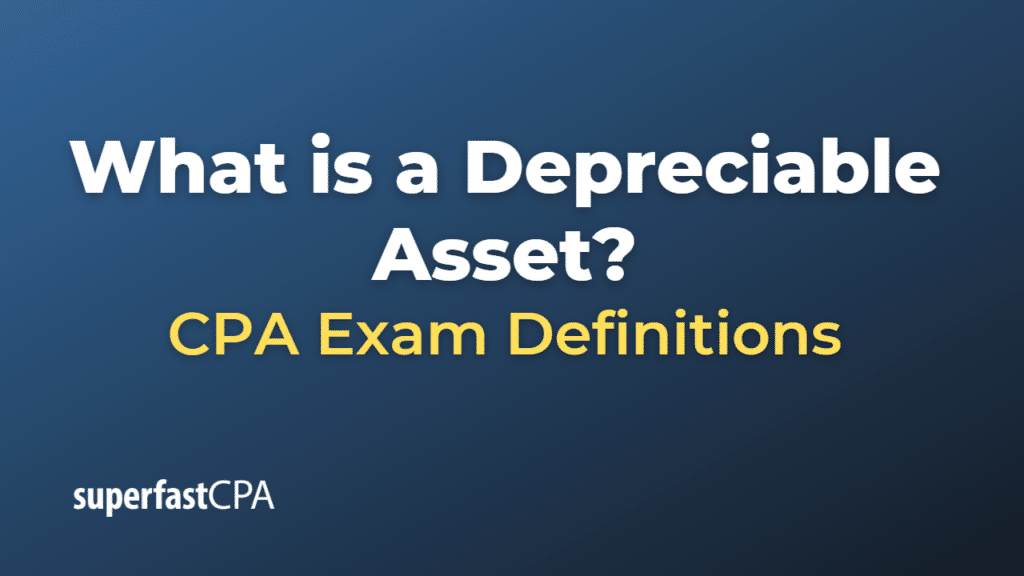Depreciable Asset
A depreciable asset is a tangible or intangible asset that a company or business uses over time, and which loses value (depreciates) due to factors such as age, wear and tear, or obsolescence.
Common examples of depreciable assets include buildings, machinery, office equipment, furniture, and vehicles. All these assets have a useful life longer than a year, and they’re used in the operations of a business to generate revenue.
Companies depreciate these assets to spread out the cost of the assets over their useful lives, thereby matching the expense of the asset against the revenue it helps to generate. This is in line with the matching principle in accounting, which states that expenses should be recorded in the same period as the revenue they help to generate.
However, it’s important to note that not all assets are depreciable. Land, for instance, is not depreciated because it does not wear out or become obsolete. Similarly, assets that are immediately consumed in one accounting period or have a useful life of less than a year are typically expensed rather than depreciated.
The method and rate of depreciation can vary depending on the type of asset, its estimated useful life, and the depreciation method chosen by the company. Common methods include straight-line, declining balance, and units of production.
Example of a Depreciable Asset
Let’s say a company purchases a piece of machinery for $100,000. The machinery has an estimated useful life of 10 years, after which it’s expected to have no resale value (salvage value of $0).
The company might choose to use the straight-line method of depreciation, which is the simplest and most commonly used. Under the straight-line method, the machinery would depreciate at an equal amount each year until it reaches its salvage value at the end of its useful life.
Here’s the calculation:
\(\text{Depreciation expense} = \frac{\text{Cost of asset – Salvage value}}{\text{Useful life}} \)
\(\text{Depreciation expense} = \frac{\$100,000 – \$0}{\text{10 years}} \)
\(\text{Depreciation expense} = \text{\$10,000 per year} \)
So, the company would record a depreciation expense of $10,000 each year for 10 years. At the end of the 10 years, the machinery would be fully depreciated and its book value (the value recorded in the company’s financial books) would be $0.
This allows the company to match the cost of the machinery with the revenues it helps to generate over its useful life, spreading the cost out over a decade instead of recording a large expense in the year the machinery was purchased.













